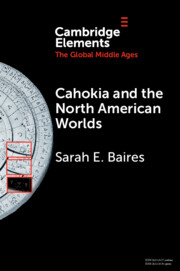Element contents
Cahokia and the North American Worlds
Published online by Cambridge University Press: 17 February 2022
Summary
- Type
- Element
- Information
- Online ISBN: 9781108934077Publisher: Cambridge University PressPrint publication: 10 March 2022
References
- 14
- Cited by

